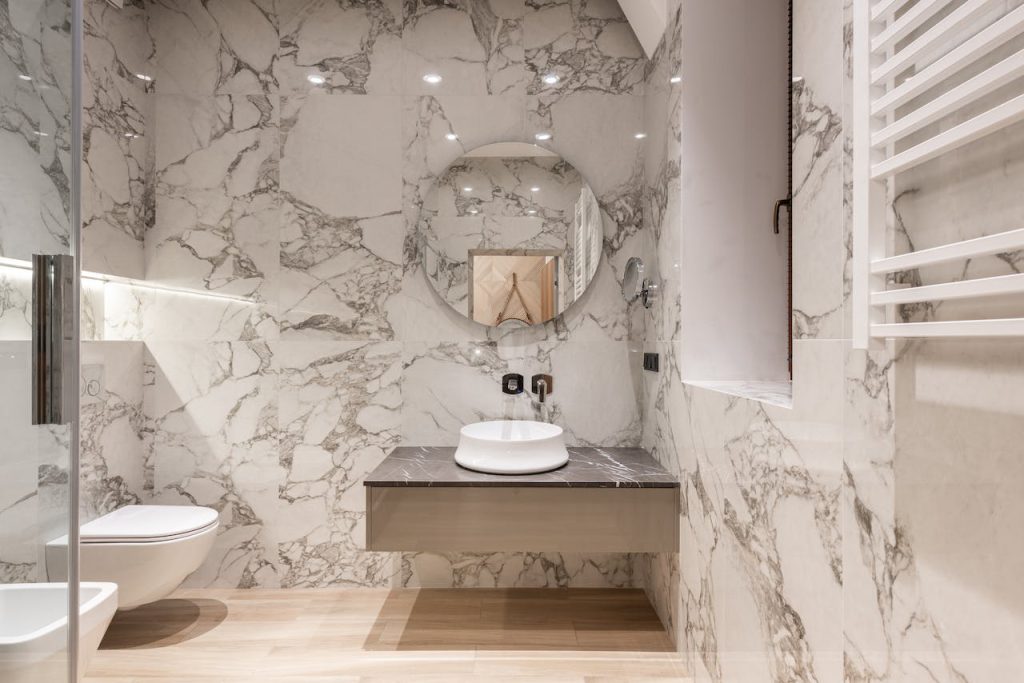Regular maintenance is key to keeping your bathroom in good working order, and one of the most important fixtures to maintain is the toilet. Neglecting proper care can lead to a host of issues, from minor inconveniences to costly repairs.
By understanding these common pitfalls, you can save yourself time, money, and frustration in the long run. We will discuss the importance of regular maintenance and how it can prevent toilet issues from arising. We’ll highlight the benefits of being proactive in addressing any problems that do occur. So if you’re looking for ways to keep your bathroom functioning smoothly and efficiently, look no further.
Table of Contents
ToggleTroubleshooting Common Toilet Issues
Identifying The Source Of A Leaky Toilet
Leaky toilets can be a real pain, but identifying the source of the leak is the first step in fixing the problem. Start by checking if water is pooling around the base of the toilet or if you notice any drips coming from the tank. If it’s at the base, it could be a faulty wax ring seal that needs replacing. If there are drips from the tank, it might be a worn-out flapper valve that needs to be replaced.
Understanding The Causes Of Weak Flushes And Slow Refills
When you flush your toilet and notice that it doesn’t have enough power or takes forever to refill, there could be a few reasons behind this issue. One common cause is a clogged or partially blocked drain pipe. You can try using a plunger to clear any obstructions or use a plumbing snake for more stubborn clogs. Another possibility is an issue with the fill valve or float mechanism inside the tank. Adjusting or replacing these components may help improve flushing and refill performance.
Dealing With Phantom Flushes And Constant Running Water
If your toilet seems to flush on its own without anyone pressing down on the handle, you’re dealing with what’s known as “phantom flushes.” This usually happens when there’s an issue with the flapper valve not sealing properly. To fix this, check if there’s any debris caught under the flapper and remove it if necessary. Constant running water in your toilet can occur due to a faulty fill valve or overflow tube. Adjusting or replacing these parts should stop that annoying continuous flow.
Troubleshooting Common Flushing Mechanism Malfunctions
Sometimes, your toilet may experience issues specifically related to its flushing mechanism. For example, if you press down on the handle and nothing happens, it could indicate a loose chain connecting the handle to the flapper. Adjusting the chain’s length or replacing it altogether should solve the problem. On the other hand, if you notice that the handle is stuck in a downward position and the water keeps running, it might be due to a broken flush lever. Replacing this lever will restore proper flushing functionality.
Remember, when dealing with common toilet problems, it’s essential to approach troubleshooting with patience and caution. If you’re unsure about any steps or need further assistance, don’t hesitate to consult a professional plumber who can help resolve the issue effectively.
Fixing A Running Toilet
Adjusting The Float Level
To ensure your toilet functions optimally, it’s important to adjust the float level. Here’s a step-by-step guide:
- Locate the toilet tank, which is usually at the back of the toilet bowl.
- Lift off the lid of the tank and place it aside carefully.
- Take a look inside the tank and find the float ball or cup attached to a metal rod.
- If your toilet has a float ball, you can adjust its position by bending the metal rod slightly downwards to lower the water level or upwards to raise it.
- For toilets with a float cup, locate an adjustment screw on top of it and turn it clockwise to decrease the water level or counterclockwise to increase the water level.
Replacing Faulty Flapper Valves
If you’re dealing with continuous water flow in your toilet, chances are that your flapper valve needs replacement. Follow these steps:
- Turn off the water supply by shutting down the inlet valve located near the base of your toilet.
- Flush your toilet to empty any remaining water from the tank.
- Remove any excess water from the inside using a sponge or towel.
- Disconnect and remove the old flapper valve by unhooking it from its chain and sliding it off its attachment points.
- Install a new flapper valve by attaching it securely to its designated spots and reconnecting it with the chain.
Checking And Adjusting Fill Valve
The fill valve plays an essential role in regulating water flow into your toilet tank, preventing running toilets. Here’s what you need to do:
- Turn off the water supply as mentioned earlier before proceeding further.
- Look for a fill valve assembly inside your tank; it is usually connected to a small tube that fills up with water after each flush.
- Inspect if there are any leaks or cracks in the fill valve assembly. If you notice any damage, it’s best to replace it entirely.
- To adjust the fill valve, locate a screw or a knob on top of it and turn it clockwise to decrease water level or counterclockwise to increase water level.
Addressing Other Potential Causes
Sometimes, a running toilet can have other underlying causes that need attention. Here are some additional troubleshooting steps:
- Check for any loose connections between the toilet tank and bowl. Tighten them if necessary.
- Examine the flapper chain length; ensure it has enough slack but isn’t too loose.
- Look for any mineral buildup around the flush holes inside the rim of your toilet bowl and clean them with a suitable cleaner.
- Inspect the overflow tube for any blockages or damage; clear out debris if needed.
Remember, if you encounter difficulties during this process, it’s always best to consult with a licensed plumber who can provide expert guidance and assistance.
Unclogging A Toilet
Using A Plunger Effectively
One of the most effective tools you can use is a plunger. To use it effectively, start by ensuring that there is enough water in the bowl to cover the suction cup of the plunger. Place the plunger over the drain hole firmly push down and then pull up repeatedly. The suction created by this motion helps dislodge minor clogs and allows water to flow freely through the drain line.
Pros:
- A simple and inexpensive tool
- Can be used for minor clogs
Cons:
- May not work for more stubborn obstructions
Employing Natural Remedies
If you’re facing a simple blockage in your toilet, you may want to consider using natural remedies before reaching for harsh chemicals. One popular method is pouring hot water into the toilet bowl along with some dish soap. The hot water helps break down any grease or debris causing the blockage, while dish soap acts as a lubricant. Allow the mixture to sit for a few minutes before attempting to flush.
Pros:
- Environmentally friendly option
- Safe for most plumbing systems
Cons:
- Not suitable for severe or persistent clogs
Utilizing A Plumbing Snake Or Auger
For more stubborn obstructions that cannot be cleared with a plunger or natural remedies, it may be necessary to use a plumbing snake or auger. These tools are designed to navigate through pipes and break up or remove blockages. Insert the snake into the toilet’s drain opening and twist it clockwise while pushing forward. This action helps dislodge any debris that may be causing the clog.
Pros:
- Effective for tougher clogs
- Can reach deeper into pipes than a plunger
Cons:
- Requires some skill and caution when handling
- May not be suitable for all types of toilets
Knowing When To Call A Professional Plumber
In some cases, despite your best efforts, you may find that the clog in your toilet is too stubborn or persistent to be resolved on your own. This is when it’s necessary to call a professional plumber. They have the expertise and specialized tools to tackle even the most challenging clogs. If you notice other signs such as bubbling in the toilet or water overflowing from the tank, it could indicate a more significant issue with your plumbing system that requires immediate attention.
Pros:
- Expertise and experience in handling complex clogs
- Can diagnose and address underlying plumbing issues
Cons:
- Cost of hiring a professional plumber
Remember, dealing with a malfunctioning toilet can be frustrating, but by following these tips and knowing when to seek professional help, you can effectively unclog your toilet and restore its functionality.
Repairing Leaks And Seal Issues
Detecting Leaks Around The Base Of The Toilet And Fixing Them Promptly
One common issue that can occur with a malfunctioning toilet is leaks around the base. These leaks can lead to water damage, unpleasant odors, and even mold growth if left unaddressed. To detect leaks, you can look for water pooling around the bottom of the toilet or notice persistent dampness in that area. If you suspect a leak, it’s important to act promptly to prevent further damage.
Replacing Worn-Out Wax Rings To Prevent Water Seepage From Beneath The Bowl
A worn-out wax ring is often the culprit behind leaks at the base of a toilet. This ring creates a watertight seal between the toilet flange and the bottom of the toilet bowl. Over time, this wax ring can deteriorate or become compressed, causing water seepage. To fix this issue, you will need to replace the wax ring. It’s essential to turn off the water supply before removing the toilet and installing a new wax ring.
Addressing Loose Or Damaged Supply Line Connections Causing Leaks
Another common cause of toilet leaks is loose or damaged supply line connections. The supply line connects your toilet tank to your home’s water supply. If these connections are loose or damaged, they can result in water leakage. To address this issue, check if any connections are loose and tighten them using an adjustable wrench if necessary. If there are visible signs of damage such as cracks or splits in the supply line, it may be best to replace it altogether.
Resolving Leaking Tank Bolts By Tightening Or Replacing Them As Needed
Leaking tank bolts can also contribute to toilet malfunctions and should be addressed promptly. These bolts secure your toilet tank to its base and help maintain a watertight seal. Over time, these bolts may become loose due to regular use or wear out completely. To fix this issue, you can try tightening the bolts using a wrench. If that doesn’t solve the problem, it may be necessary to replace the bolts and accompanying washers.
By addressing leaks and seal issues promptly, you can prevent further damage to your toilet and avoid potential water wastage. Regularly inspecting your toilet for signs of leaks or dampness around the base is a good practice to identify any problems early on. Remember to turn off the water supply before attempting any repairs or replacements to ensure safety.
Improving Toilet Flush Performance
Adjusting Water Levels In The Tank
To improve the flushing power of your toilet, one simple step you can take is adjusting the water levels in the tank. The water level should be set just below the top of the overflow tube to ensure optimal performance. If it’s too low, you may experience weak flushes, and if it’s too high, there’s a risk of water overflowing.
Here are some key steps to follow when adjusting water levels:
- Locate the fill valve inside the tank.
- Turn off the water supply by twisting the valve clockwise.
- Use a screwdriver or adjuster tool to turn the adjustment screw on top of the fill valve.
- Rotate it counterclockwise to raise or lower the float cup, which controls water levels.
- Check flush performance after each adjustment until you find an optimal level.
Cleaning Mineral Deposits From Rim Holes
Over time, mineral deposits can accumulate in the rim holes of your toilet bowl, obstructing proper flow and reducing flush efficiency. To enhance flushing power and prevent clogs, regular cleaning is essential.
Follow these steps to clean mineral deposits:
- Put on gloves and safety glasses for protection.
- Mix equal parts white vinegar and warm water in a spray bottle.
- Spray this solution around and inside each rim hole.
- Allow it to sit for about 30 minutes to dissolve mineral buildup.
- Scrub gently with a toilet brush to remove any remaining residue.
- Flush several times to ensure all debris is cleared away.
Upgrading Older Toilets With Dual-Flush Mechanisms
If you have an older toilet that lacks flushing power, consider upgrading it with a dual-flush mechanism for improved performance and water conservation.
Here are some benefits of upgrading to a dual-flush system:
- Allows you to choose between a partial flush (for liquid waste) and a full flush (for solid waste), saving water.
- Provides better flushing power due to improved design and technology.
- Reduces the risk of clogs by offering different flush options.
Considering Pressure-Assist Systems For High-Performance Flushing
For those seeking high-performance flushing, pressure-assist systems are worth considering. These systems use compressed air to provide a powerful flush that clears waste effectively.
Here are some advantages of pressure-assist systems:
- Stronger flushing power compared to traditional gravity-fed toilets.
- Less prone to clogs due to increased force behind the flush.
- Ideal for households with heavy usage or low-flow plumbing requirements.
Remember, when dealing with any toilet repairs or upgrades, it’s always best to consult a professional plumber if you’re unsure about any aspect of the process. They can offer expert guidance and ensure everything is installed correctly.
Replacing Old Toilets And Seats
Signs That Indicate It’s Time For A New Toilet Or Seat
Is your toilet seat showing signs of wear and tear? Are you tired of constantly repairing your old toilet? It might be time to consider replacing them. Look out for these signs that indicate it’s time for a new toilet or seat:
- Cracks and chips: If you notice cracks or chips in the porcelain of your toilet bowl or tank, it’s a clear sign that it needs to be replaced. These damages can lead to leaks and further problems down the line.
- Constant clogs: If your toilet is frequently getting clogged, even after attempts to unclog it, it could be due to an outdated design or poor flushing power. Upgrading to a newer model with improved flushing technology can help alleviate this issue.
- Frequent repairs: Are you spending more time fixing your toilet than actually using it? Constantly tightening hinge screws, replacing parts, or dealing with recurring issues can be frustrating and costly. Investing in a new toilet can save you from ongoing repairs.
- Rust and corrosion: Over time, metal parts of the toilet, such as hinges and bolts, may start rusting due to exposure to moisture in the bathroom. Rust not only affects the appearance but also weakens the structural integrity of the toilet.
Choosing The Right Toilet Model Based On Water Efficiency And Comfort
When selecting a new toilet model, there are two essential factors to consider: water efficiency and comfort.
- Water efficiency: Opting for a high-efficiency toilet (HET) can significantly reduce water consumption while maintaining excellent performance. Look for models labeled with WaterSense certification as they meet strict criteria for water conservation without compromising functionality.
- Comfort: Comfort is crucial when choosing a new toilet because nobody wants an uncomfortable experience! Consider features like elongated bowls for added legroom, ergonomic designs, and soft-close seats that prevent slamming.
Proper Installation Techniques For A New Toilet Or Seat
Installing a new toilet or seat may seem daunting, but with the right techniques, it can be a straightforward process. Here are some steps to follow:
- Gather the necessary tools: Before you begin, make sure you have all the tools required for installation. These typically include a wrench, screwdriver, wax ring, and bolts.
- Remove the old toilet: Start by turning off the water supply to the toilet and flushing it to empty the tank. Disconnect the water supply line and unscrew the bolts holding the toilet in place. Carefully lift off the old toilet and remove any remaining wax from the flange.
- Install the new toilet: Place a new wax ring on top of the flange and align the holes of your new toilet with those on the flange. Gently lower it onto the wax ring until it sits firmly in place. Secure it by tightening bolts evenly on both sides.
- Attach a new seat: If you’re also replacing your toilet seat, follow manufacturer instructions for attaching it securely to avoid any wobbling or shifting.
Preventing Future Toilet Problems
To avoid common mistakes when dealing with a malfunctioning toilet, it’s important to take preventive measures that can help you steer clear of future plumbing issues. By following these simple steps, you can keep your toilet running smoothly and avoid costly repairs.
Regular Cleaning To Prevent Buildup And Clogs
Regular cleaning is essential to prevent the buildup of debris and clogs in your toilet. Make sure to clean the bowl, rim, and jets at least once a week using a toilet brush and mild cleaner. This will help remove any mineral deposits or residue that may accumulate over time. Consider using a vinegar solution for deep cleaning as it can effectively dissolve mineral deposits.
Avoid Flushing Non-Flushable Items Down The Toilet
One of the most common mistakes people make is flushing non-flushable items down the toilet. This can lead to clogs and damage to your plumbing system. To avoid this problem, remember that only human waste and toilet paper should be flushed down the toilet. Items like wipes, sanitary products, dental floss, cotton balls, or paper towels should never be flushed as they can cause blockages.
Use Water-Saving Practices To Reduce Strain On The System
Using water-saving practices not only helps conserve water but also reduces strain on your plumbing system. Consider installing a low-flow toilet that uses less water per flush. You can also place a brick or water-filled plastic bottle in the tank to reduce the amount of water used with each flush. Furthermore, encourage family members to practice shorter showers and turn off faucets when not in use.
Schedule Professional Inspections To Catch Potential Issues Early
Regular professional inspections are crucial for catching potential issues with your toilet early on before they become major problems. A licensed plumber can inspect your plumbing system, check for leaks or cracks in pipes, examine water levels and pressure, and identify any signs of wear or corrosion. By scheduling these inspections annually, you can prevent small issues from turning into costly repairs.
By implementing these preventive measures, you can maintain a healthy plumbing system and avoid common mistakes when dealing with a malfunctioning toilet. Regular cleaning, proper flushing habits, water-saving practices, and professional inspections are all key to preventing future problems. Remember to take care of your toilet and it will take care of you!
Conclusion
In conclusion, this blog post has provided a comprehensive guide to avoiding common mistakes when dealing with a malfunctioning toilet. The sections covered troubleshooting common toilet issues, fixing a running toilet, unclogging a toilet, repairing leaks and seal issues, improving toilet flush performance, replacing old toilets and seats, and preventing future toilet problems. By following the tips and techniques outlined in these sections, readers can effectively address various toilet malfunctions and ensure efficient and hassle-free bathroom experiences.
To further enhance your understanding and tackle any future challenges with confidence, it is recommended to bookmark this blog post for quick reference. Remember to prioritize safety precautions when working on your toilet and consult professional help if needed. By proactively addressing toilet issues using the information provided here, you can save time, money, and potential headaches down the line.
Sources:
Looking For A Reliable Malfunctioning Toilet Repair Team?
Look no further than Garcia Plumbing and Home Restoration! We are your go-to experts for all your toilet and plumbing needs. Our licensed and insured team delivers top-notch services that will leave you impressed.
We cover it all, from toilet repairs and replacements to clog removal and water-efficient upgrades. We’re also experts in bathroom mold remediation and plumbing-related damage repair. No matter the issue, we have the skills to restore your bathroom to its former glory.
At Garcia Plumbing and Home Restoration, our commitment is unwavering. We provide exceptional service to homeowners throughout Contra Costa County and beyond. With satisfied repeat customers and glowing referrals, we take immense pride in our quality workmanship.
Don’t hesitate! Contact us today, and let us be your trusted partner in fixing your malfunctioning toilet. Experience the difference our dedicated team can make in bringing your bathroom back to life!




